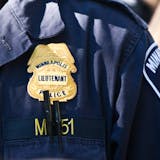John Runningen expects to have $15,000 to $20,000 in debt by the time he finishes studying to become a social studies teacher. That amounts to nearly a third of a typical teacher's salary in Minnesota, and entry-level teachers often take home less.
He knows his student loan payments will be a strain.
"Many students that I've been able to talk to have experienced a lot of the same financial struggles and instabilities," said Runningen, a student leader who is enrolled at Minnesota State Community and Technical College in Fergus Falls.
So Runningen and other students plan to lobby state lawmakers for financial relief and help covering their basic needs. With many other sectors competing for a slice of the state's historic $17.6 billion surplus, they'll face competition — and inquiries from lawmakers who have questions about the ballooning costs and declining enrollment at Minnesota's higher education institutions.
"I want an understanding of what's going on," said Rep. Gene Pelowski, DFL-Winona, who chairs the House Higher Education Finance and Policy Committee.
Pelowski said he plans to begin the session by focusing on the budget. Student leaders at public colleges and universities are asking the state to invest $1 billion in higher education, money that would go to a variety of programs.
The Minnesota State system is asking for its biggest funding increase ever — an extra $350 million over two years — as part of a pitch to freeze tuition for students. The University of Minnesota is asking for an extra $205 million and promising to consider spending cuts and tuition increases in exchange.
The Minnesota Private College Council, meanwhile, is seeking increased support for a state grant program designed to help students from low- and middle-income families cover costs at both public and private institutions.



